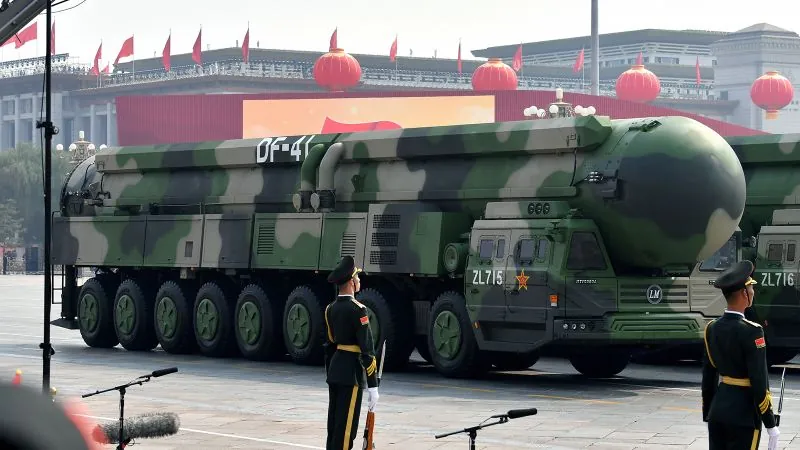
Tensions Soar as China Conducts Rare ICBM Test in the Pacific—What It Means for Global Security
2024-09-25
In a significant display of military prowess, China successfully launched an intercontinental ballistic missile (ICBM) into the Pacific Ocean on Wednesday. This marked the first public test of its kind in over four decades, coinciding with rising tensions in the region, particularly with the United States and allied nations.
The missile, equipped with a dummy warhead, was fired at 8:44 a.m. Beijing time and descended into a specified area of the high seas, according to a statement from the Chinese Defense Ministry. While the exact flight path and landing site were not disclosed, this test reflects China's strengthening missile capabilities amid escalating international concerns.
According to the Chinese Ministry of Defense, the launch was a routine training operation conducted by the People's Liberation Army Rocket Force and was not aimed at any specific country or target. However, it is especially noteworthy as it occurs during joint naval exercises between China and Russia in waters near Japan, heightening regional apprehension.
State news agency Xinhua stated that China had "notified relevant countries in advance," though the recipients of this notification remain unspecified. Still, the nature of the missile test—which "effectively tested the performance of weapons and equipment"—is seen as a powerful testament to China's advancing military technology.
The last recorded ICBM launch—initially celebrated in 1980—demonstrated China's burgeoning missile capabilities with the DF-5, which traversed over 8,000 kilometers. Since then, China's ICBM testing has continued, though often conducted in relative secrecy over its own territory.
This recent launch also underscores a broader trend: as tensions heighten in the East China Sea, Taiwan Strait, and South China Sea, China's military maneuvers have become increasingly bold. Events such as increased encounters between Chinese and U.S. military forces, assertive actions in disputed maritime territories, and intensified military drills near Taiwan have drawn international scrutiny.
According to Drew Thompson, a senior fellow at Singapore's S. Rajaratnam School of International Studies, the timing of this launch sends a clear message. "This is quite a statement to launch a ballistic missile into the Pacific at this time when China is in conflict with many of its neighbors," he stated. He described the launch as a "powerful signal intended to intimidate everyone."
Amidst these developments, a critical question arises: which nations were informed of the missile test? Historically, international norms govern the notification of other countries about ballistic missile launches to mitigate risks of miscalculation. China is not part of any comprehensive agreements akin to those maintained historically between the U.S. and Russia, or even the bilateral treaty with Russia that allows for mutual notification.
In recent years, under the leadership of Xi Jinping, China has bolstered its nuclear arsenal significantly, with satellite imagery revealing extensive construction of missile silos in its deserts. The U.S. Defense Department has projected that China, currently possessing over 500 operational nuclear warheads, may exceed 1,000 by 2030.
This missile test, while a standard military operation for China, serves as a stark reminder to the global community of the shifts in military power dynamics and the potential implications for security and stability in the Asia-Pacific region. What does this mean for diplomatic relations going forward, and how will this influence strategic maneuvering among the world's superpowers? Only time will tell.


 Brasil (PT)
Brasil (PT)
 Canada (EN)
Canada (EN)
 Chile (ES)
Chile (ES)
 España (ES)
España (ES)
 France (FR)
France (FR)
 Hong Kong (EN)
Hong Kong (EN)
 Italia (IT)
Italia (IT)
 日本 (JA)
日本 (JA)
 Magyarország (HU)
Magyarország (HU)
 Norge (NO)
Norge (NO)
 Polska (PL)
Polska (PL)
 Schweiz (DE)
Schweiz (DE)
 Singapore (EN)
Singapore (EN)
 Sverige (SV)
Sverige (SV)
 Suomi (FI)
Suomi (FI)
 Türkiye (TR)
Türkiye (TR)